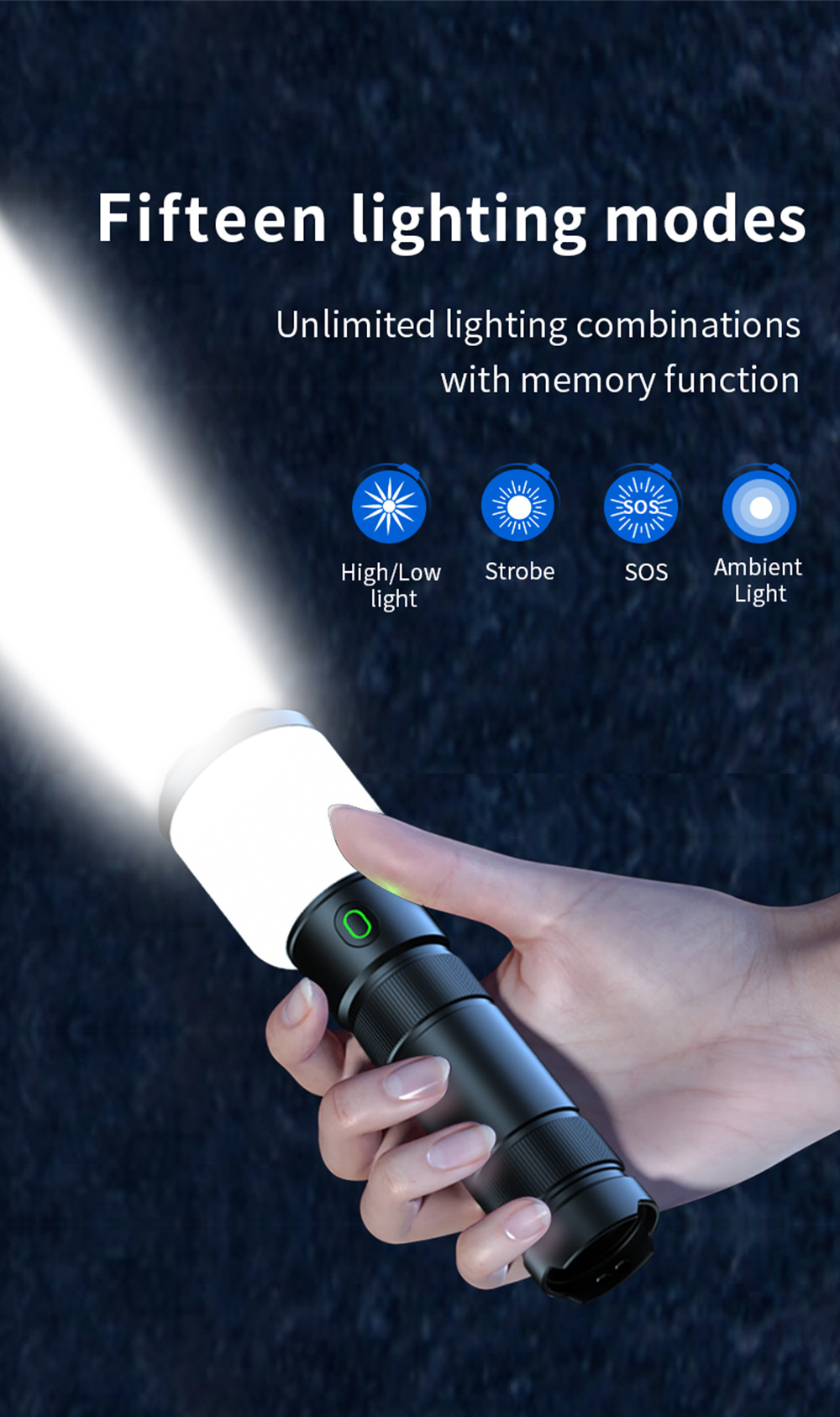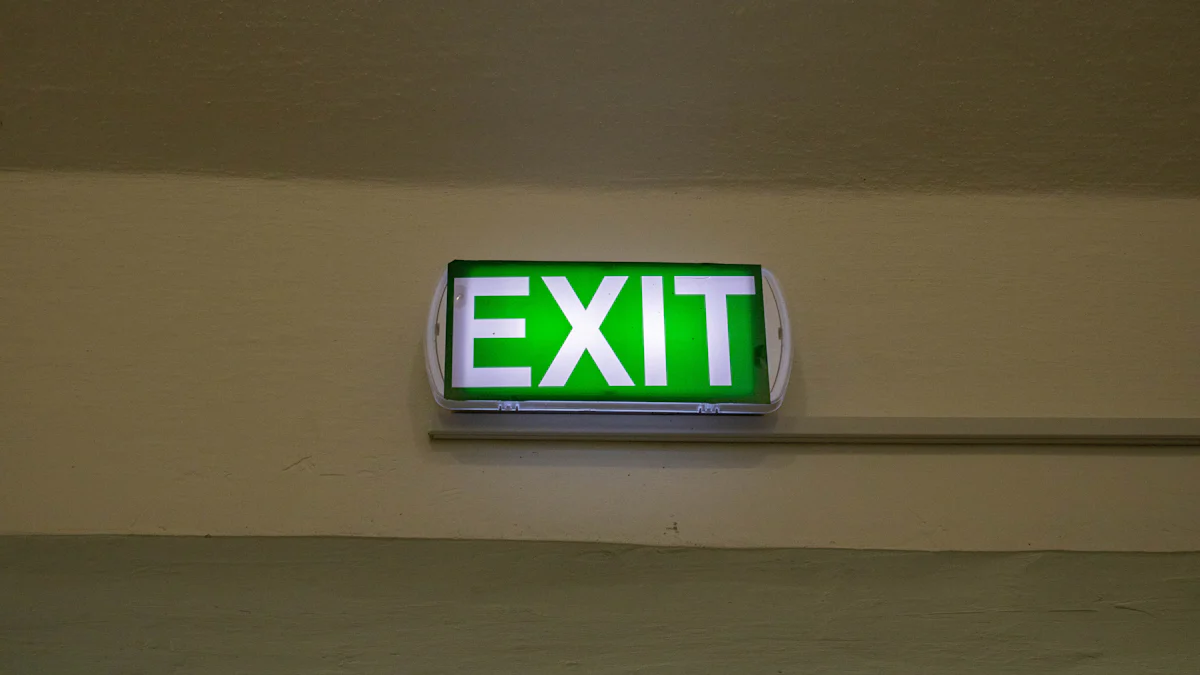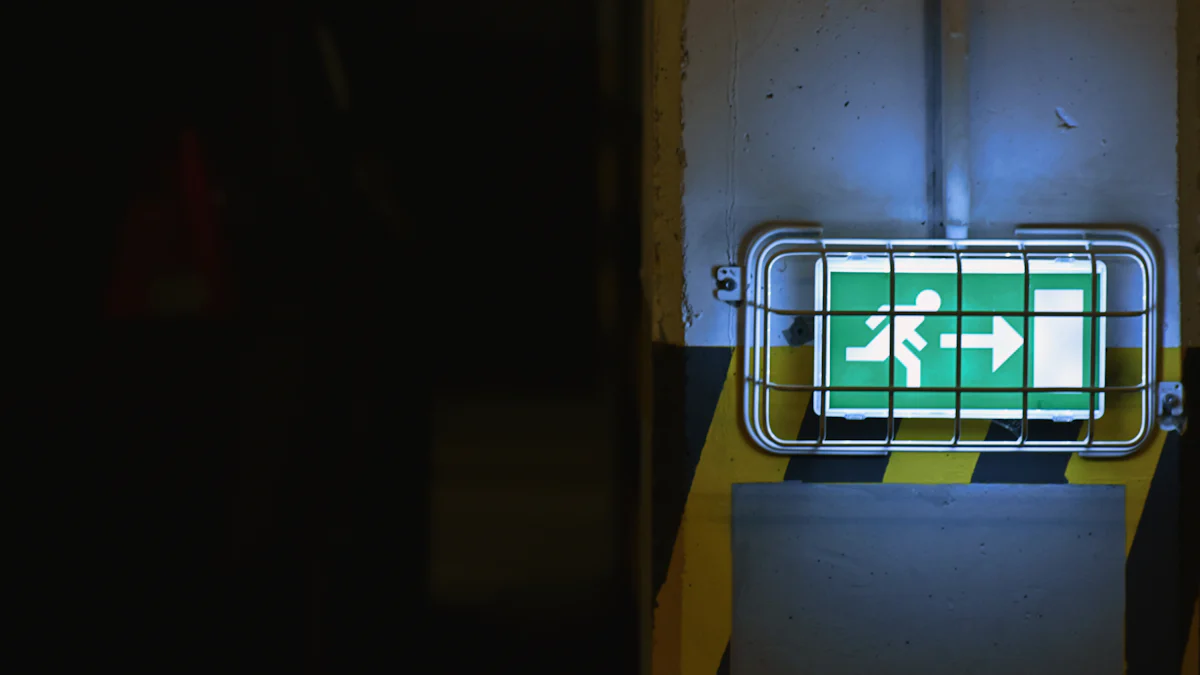Top Tips for Using Reliable Lighting After a Tornado

After a tornado, reliable lighting becomes a lifeline. It helps you navigate debris-filled areas, avoid hazards, and stay safe during power outages. Emergency response organizations recommend tools like LED lights for their brightness and efficiency, headlamps for hands-free tasks, and lanterns for lighting larger spaces. Durable, water-resistant options powered by common batteries ensure you’re prepared for unpredictable conditions. These tools not only enhance safety but also support recovery efforts by illuminating work areas and guiding emergency responders. Prioritizing reliable lighting in your emergency kit can make a critical difference when every second counts.
Key Takeaways
Good lighting is very important after a tornado. It helps you see clearly, avoid dangers, and stay safe.
Keep different lighting tools in your emergency kit. Flashlights, lanterns, and headlamps give you choices for various needs.
Check and test your lights often. This makes sure they work well when the power goes out.
Place your lights in smart spots. Put lanterns in main areas and use headlamps to keep your hands free.
Think about using solar or rechargeable lights. They last longer during outages and need fewer regular batteries.
Why Reliable Lighting Matters After a Tornado
Ensuring Safety and Navigation
After a tornado, reliable lighting becomes a critical tool for maintaining safety. Tornadoes often leave behind debris, fallen trees, and damaged structures, creating hazardous conditions. Without proper lighting, navigating these obstacles can lead to injuries. Bright and dependable lights help you see clearly, reducing the risk of accidents. When the main power supply is disrupted, reliable lighting provides the necessary illumination to minimize panic. It also supports organized evacuations, especially in areas where visibility is poor. Whether you’re moving to a safe shelter or assisting others, lighting ensures you can act quickly and safely.
Supporting Emergency and Recovery Efforts
Lighting plays a vital role in tornado relief and recovery efforts. Emergency responders rely on it to locate survivors, assess damage, and provide aid. For you, lighting can help illuminate work areas during cleanup tasks, such as removing debris or repairing damaged property. It also allows you to communicate with your community and assist neighbors in need. In community storm shelters, lighting creates a sense of security and helps maintain order. By ensuring you have reliable lighting, you contribute to disaster relief efforts and support your community’s recovery process.
Addressing Power Outages in Tornado Recovery
Power outages are common after a tornado. These outages can last for hours or even days, depending on the severity of the damage. Reliable lighting becomes essential during this time. Flashlights, lanterns, and headlamps provide temporary solutions when electricity is unavailable. Solar-powered and rechargeable lights offer sustainable options, especially during extended outages. Having backup lighting ensures you can continue daily activities, stay connected with others, and remain safe in the dark. Preparing for power disruptions with dependable lighting tools is a key part of your tornado safety checklist.
Types of Reliable Lighting Options

Flashlights for Mobility
Flashlights are essential for navigating through tornado-damaged areas. Their compact size and portability make them perfect for mobility. You can carry them easily while moving through debris or inspecting damaged property. When choosing a flashlight, prioritize durability and water resistance to withstand harsh conditions. Models like the Ledlenser K4R and K6R offer up to 10 hours of battery life and include an SOS function for emergencies. The P5R Core flashlight provides a runtime of 25 hours on its lowest setting and is IP68 certified, making it ideal for outdoor use. For brighter illumination, the P6R Core model delivers 900 lumens and features a rechargeable battery.
To maximize efficiency, look for flashlights with adjustable brightness settings. This feature helps conserve battery life during extended power outages caused by a tornado. A reliable flashlight ensures you can move safely and confidently, even in the darkest conditions.
Lanterns for Area Lighting
Lanterns are the go-to option for lighting larger spaces after a tornado. Unlike flashlights, lanterns emit light in all directions, providing wide-area coverage. This makes them ideal for illuminating rooms, outdoor spaces, or community shelters. Their portability and lightweight design add to their convenience. Many lanterns come with handles or hooks, allowing you to hang them for optimal light distribution.
During tornado recovery, lanterns create a safe and well-lit environment for tasks like sorting supplies or assisting others. They also enhance comfort in shared spaces by reducing shadows and dark corners. Whether you’re indoors or outdoors, a lantern ensures you have the visibility needed to stay productive and safe.
Headlamps for Hands-Free Tasks
Headlamps are invaluable when you need both hands free for recovery tasks. They allow you to focus on the job at hand without holding a light. The Black Diamond Spot 400 Headlamp is an excellent choice for tornado recovery. It offers a bright output, long battery life, and a durable design. Its intuitive top buttons make it easy to operate, even in stressful situations. The red-light option is useful for nighttime activities, while the strobe function can signal for help during emergencies.
Headlamps are lightweight and comfortable to wear, making them perfect for tasks like clearing debris or carrying supplies. With features like PowerTap technology, you can quickly adjust brightness levels to suit your needs. A reliable headlamp ensures you can work efficiently and safely, even in challenging conditions.
Solar-Powered and Rechargeable Lights
Solar-powered and rechargeable lights offer sustainable and reliable solutions after a tornado. These lights harness energy from the sun during the day, ensuring you have illumination at night without relying on disposable batteries. This feature reduces waste and provides an eco-friendly option for extended power outages. Rechargeable lights, on the other hand, can be powered through USB ports, car chargers, or portable power banks, making them versatile for various situations.
Consider investing in solar-powered lanterns or flashlights with built-in panels. These tools are especially useful when you face prolonged recovery periods. For example, the MPOWERD Luci Base Light provides up to 50 hours of light on a single charge and doubles as a phone charger. Rechargeable headlamps, like the Petzl Actik Core, offer bright, hands-free lighting and can be recharged quickly for repeated use.
Tip: Place solar-powered lights in direct sunlight during the day to maximize their charge. Keep rechargeable lights connected to power sources whenever possible to ensure they are ready when needed.
These lighting options help you stay prepared for the unpredictable challenges of tornado recovery. They also reduce dependency on traditional batteries, which may be scarce during emergencies.
Backup Lighting Solutions for Emergencies
Backup lighting solutions ensure you are never left in the dark during a tornado recovery. Having multiple options increases your preparedness and provides peace of mind. Here are some reliable choices to consider:
Flashlights: Durable and water-resistant models with adjustable brightness are essential. Brands like Maglite and Fenix offer long-lasting options suitable for harsh conditions.
Solar-Powered Lighting: These lights charge during the day and provide sustainable illumination at night. They are ideal for extended outages.
Smartphone Apps: Apps like 'Flashlight & LED Torch' for Android and 'Flashlight – Torch LED Light' for iOS can turn your phone into a temporary emergency light.
Note: While smartphone apps are convenient, they drain your phone’s battery quickly. Use them sparingly and prioritize other lighting tools.
Organize your backup lighting tools in a central location for easy access. Test them regularly to ensure they function properly. By preparing a variety of lighting solutions, you can handle any situation with confidence.
Top Tips for Using Lighting Effectively
Conserving Battery Life
Conserving battery life is crucial when you prepare for a tornado or face extended power outages. Following a few best practices can help you make the most of your lighting tools during an emergency.
Use energy-efficient LED lights. These consume less power and last longer than traditional bulbs.
Regularly inspect your lighting tools. Check for signs of wear, corrosion, or battery degradation. Replace batteries nearing the end of their lifespan to avoid failure.
Upgrade older lighting systems to modern, efficient designs. Newer models often include features like adjustable brightness, which helps conserve energy.
Schedule maintenance checks. Monthly functional tests and annual full-duration tests ensure your tools are in working order when you need them most.
By following these steps, you can extend the operational lifespan of your emergency lights and stay prepared for a tornado recovery.
Positioning Lights Strategically
Strategic placement of lighting tools enhances safety and efficiency during recovery efforts. Place lanterns in central locations to illuminate large areas, such as rooms or outdoor spaces. Hang them from hooks or beams to maximize light distribution.
For tasks requiring precision, use headlamps. These provide focused, hands-free lighting, allowing you to work safely in dark or confined spaces. Flashlights are ideal for mobility. Keep one near your emergency kit and another in your vehicle for quick access.
In community shelters, position lights to reduce shadows and create a sense of security. Proper placement ensures you can navigate debris, seek safe shelter, and assist others effectively.
Ensuring Backup Lighting Options
Backup lighting options are essential for any tornado safety plan. Having multiple tools ensures you’re never left in the dark. Include flashlights, lanterns, and headlamps in your emergency kit. Solar-powered and rechargeable lights are excellent choices for extended outages.
Store your backup tools in a central, easily accessible location. Test them regularly to confirm they work properly. Smartphone flashlight apps can serve as temporary solutions, but use them sparingly to conserve your phone’s battery.
By gathering emergency supplies and organizing your lighting tools, you can handle unexpected challenges with confidence. A well-prepared plan keeps you and your loved ones safe during recovery.
Organizing and Maintaining Lighting Tools
Keeping your lighting tools organized and well-maintained ensures they are ready when you need them most. After a tornado, quick access to functional lighting can make a significant difference in safety and recovery efforts. Follow these steps to keep your tools in top condition and easy to locate.
Regular maintenance is key to ensuring your system works when you need it. Inspect regularly, check batteries, clean fixtures, test bulbs, and inspect ballasts and drivers to ensure optimal performance.
Organizing Your Lighting Tools
Designate a specific storage area for all emergency lighting tools. Use labeled bins or shelves to separate flashlights, lanterns, and headlamps.
Keep tools near your emergency kit or in a central location for quick access.
Store solar-powered lights in areas with sunlight exposure to keep them charged.
Use a checklist to track your inventory and ensure nothing is missing.
Maintaining Your Lighting Tools
Inspect your tools regularly for damage or wear. Look for corrosion, cracks, or loose parts.
Test all lights monthly to confirm they work properly. Replace bulbs or batteries as needed.
Stock up on high-quality batteries, including rechargeable options, to avoid running out during emergencies.
Clean your tools to remove dirt or debris that could affect performance. Use a soft cloth for lenses and a dry brush for crevices.
Rotate batteries in storage to prevent them from losing charge over time.
Tip: Consider integrating smartphone apps for temporary lighting, but rely on dedicated tools for long-term use.
By organizing and maintaining your lighting tools, you ensure they are reliable during a tornado recovery. A well-prepared system saves time and reduces stress when every second counts.
Safety Considerations When Using Lighting

Avoiding Fire Hazards
Lighting tools can pose fire risks if not used carefully. You must take specific safety precautions to reduce these risks. For example, store flammable liquids in ventilated cabinets away from heat sources. Keep combustible materials far from electrical outlets and heating systems. Regularly inspect your lighting tools for damaged wires or loose connections. Replace faulty components immediately to prevent malfunctions.
Careless disposal of smoking materials also increases fire risks. Designate smoking areas and provide proper disposal bins to minimize this hazard. Additionally, develop a fire safety plan for your household. Conduct regular audits to identify potential dangers. These steps ensure your lighting tools remain safe during tornado recovery efforts.
Did you know? Electrical issues cause 12% of fires, while malfunctioning equipment accounts for 29%. Proper maintenance and storage can significantly lower these risks.
Proper Maintenance of Lighting Tools
Maintaining your lighting tools ensures they perform reliably when you need them most. Regular cleaning and dusting improve their efficiency and appearance. Inspect electrical connections periodically to prevent hazards. Replace bulbs promptly to maintain consistent lighting quality.
Address flickering or dimming issues as soon as they arise. These problems can worsen over time and lead to equipment failure. Schedule routine inspections to catch potential issues early. For advanced systems, consider professional maintenance services. Optimizing lighting controls also reduces wear and saves energy.
By following these practices, you extend the lifespan of your tools and enhance their reliability. Well-maintained lighting tools are essential for ensuring safety during tornado recovery.
Protecting Against Electrical Hazards
Electrical hazards can arise when using lighting tools, especially in wet or damaged environments. Inspect your tools for frayed cords, exposed wires, or loose connections. Tag faulty equipment and have it repaired immediately. Avoid using electrical tools in wet areas unless they are designed for such conditions. Ground Fault Circuit Interrupters (GFCIs) can cut off power during ground faults, adding an extra layer of safety.
Overloaded circuits are another common hazard. Do not plug too many devices into one outlet. Use power strips with overcurrent protection to prevent overheating. Proper insulation and regular inspections of wiring also reduce risks.
Taking these precautions ensures your lighting tools remain safe and functional. Protecting against electrical hazards is a critical part of your tornado recovery plan.
Reliable lighting is essential for tornado recovery. It ensures your safety, helps you navigate your shelter, and supports recovery efforts. Preparing in advance makes a significant difference. Assess your emergency kit by conducting monthly functional tests and replacing outdated tools. Upgrade to energy-saving LED systems for efficiency and longer use. Store lighting tools in accessible areas of your shelter to act quickly during emergencies. Take action today to protect yourself and your loved ones. A well-prepared kit with dependable lighting tools ensures you are ready for any challenge.
FAQ
What type of lighting is best for tornado recovery?
LED lights are the best choice. They are energy-efficient, durable, and provide bright illumination. Flashlights, lanterns, and headlamps with LED technology ensure you have reliable lighting for various tasks during recovery.
How can I store lighting tools to keep them ready?
Store your tools in a central, easily accessible location. Use labeled bins or shelves to organize flashlights, lanterns, and headlamps. Keep solar-powered lights in sunlight and test all tools monthly to ensure they work properly.
Are solar-powered lights reliable during extended outages?
Yes, solar-powered lights are reliable. They charge during the day and provide sustainable illumination at night. Place them in direct sunlight to maximize their charge. They are ideal for prolonged recovery periods when traditional batteries may not be available.
How do I prevent electrical hazards with lighting tools?
Inspect your tools for frayed cords or exposed wires. Avoid using electrical lights in wet areas unless designed for such conditions. Use power strips with overcurrent protection and ensure proper insulation to reduce risks.
Should I include smartphone flashlight apps in my emergency kit?
Smartphone flashlight apps can serve as temporary solutions. However, they drain your phone’s battery quickly. Use them sparingly and rely on dedicated lighting tools like flashlights or lanterns for long-term use.
See Also
Key Strategies for Keeping Your Flashlight Functional
A Homeowner's Guide to Selecting the Ideal Emergency Flashlight
Best Practices for Picking the Right Camping Flashlight
